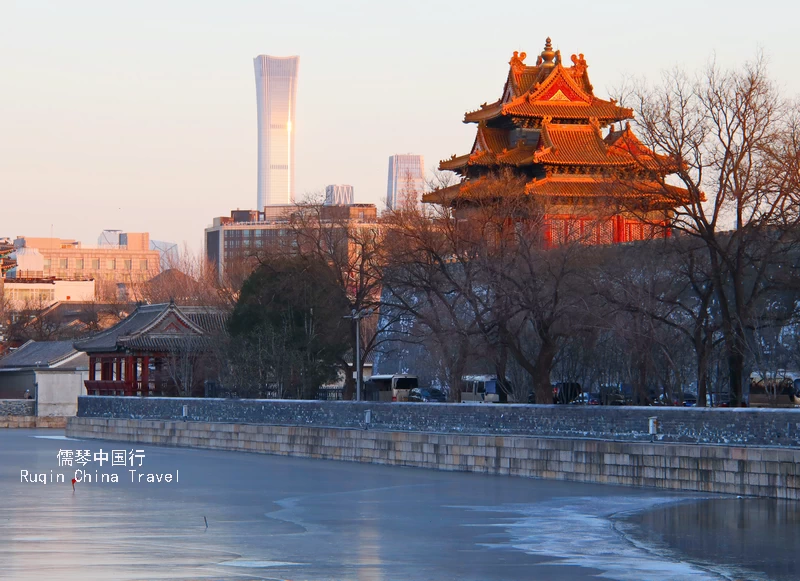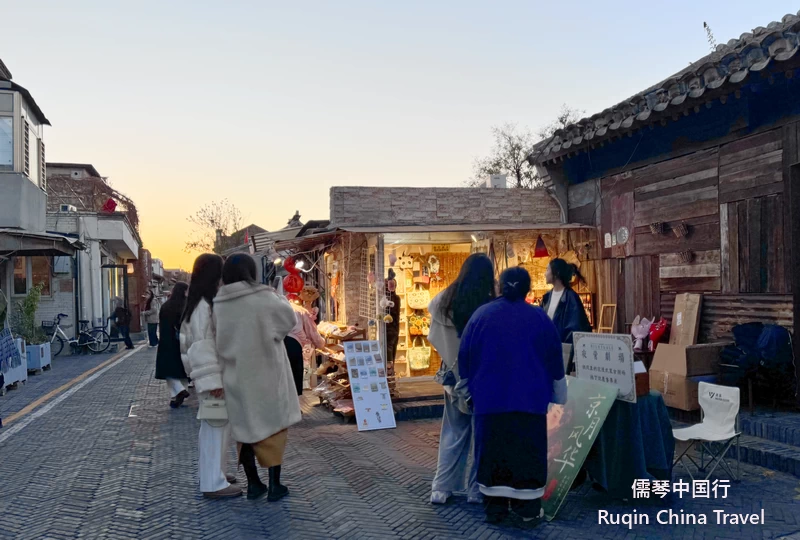Beijing (北京), China’s vibrant and historic capital, wasn’t always called “Beijing” in the English-speaking world. In fact, many people still recognize its older name, “Peking“(北平).
But why did this shift happen? For travelers visiting Beijing, understanding the story behind its name can deepen their appreciation of this fascinating city. Let’s explore why “Peking” became “Beijing” and what this change means for China’s modern identity.
The Origin of “Peking“
The name “Peking” dates back to early Western interactions with China. When British diplomats and scholars began recording Chinese names in English during the 19th century, they used a system called Wade-Giles to represent Chinese sounds. In this system, “Beijing” became “Peking” in English. However, Wade-Giles wasn’t perfect; it often distorted Mandarin pronunciation. For instance, the “k” sound in “Peking” doesn’t accurately reflect the way locals say “Beijing.”
“Peking” remained the standard for decades. Yet, this spelling was more than a simple name. It represented an early attempt to bridge Chinese and Western cultures despite linguistic differences. For centuries, Western travelers, writers, and mapmakers referred to China’s capital as “Peking“, making the name iconic in the Western world. However, a more precise system would eventually take its place, allowing China to represent its language more accurately to the world.
Introduction of Pinyin
In the 1950s, Chinese linguists, led by Zhou Youguang, created a new system called Pinyin to improve the way Chinese sounds were written in the Roman alphabet. Pinyin, which means “spelled sounds,” was officially adopted in 1958 by the Chinese government. Unlike Wade-Giles, Pinyin used more accurate spellings based on Mandarin pronunciation. Under Pinyin, “Peking” changed to “Beijing“, which sounds closer to how locals pronounce it in Mandarin.
Pinyin offered a reliable and standardized way to represent Mandarin in the Latin alphabet. It wasn’t only about language, though. The new system reflected China’s growing influence and desire to engage the world on its own terms. By using a Romanization system developed by Chinese linguists, China promoted a more accurate and unified way for foreigners to pronounce its place names. In the decades that followed, Pinyin gradually replaced older systems like Wade-Giles worldwide.
Transition from Peking to Beijing
The shift from “Peking” to “Beijing” took place mainly in the 1980s. By this time, Pinyin had gained international recognition and was adopted by major global organizations like the United Nations. Media outlets and government agencies also embraced the change, helping to popularize “Beijing” as the official name. Today, “Beijing” is widely used around the world, from newspapers to travel websites.
This shift was more than a linguistic update; it symbolized a change in China’s approach to the world. By adopting Pinyin, China took greater control of its cultural representation, aligning with its evolving role on the international stage. The name “Beijing” now reflects a modern, unified China, bridging history with its ambitions in the global community.
What Does This Change Mean?
The transition from “Peking” to “Beijing” represents more than a shift in spelling. It marks China’s growth and modern approach to international engagement. By promoting Pinyin, China has helped foreigners pronounce and understand its language better, fostering greater mutual understanding. This new system allows non-native speakers to come closer to Mandarin’s true sounds, breaking down linguistic barriers that once existed.

Furthermore, the name “Beijing” reflects China’s modernization efforts and its commitment to cultural accuracy. Pinyin’s adoption mirrors China’s push to develop systems that reflect its own values and language, rather than relying on Western interpretations. In many ways, this small change reflects a larger narrative of China’s rise as a global power and its journey toward international cooperation.
Peking in Modern Context
Although “Beijing” is now the official and widely accepted name, “Peking” still holds significance in certain areas. This older name appears across various spheres, maintaining a cultural presence and historical connection. Travelers may notice “Peking” in both traditional and modern contexts, reflecting its lasting influence in Chinese and Western history.
In academia, for instance, “Peking” is still used in historical studies and Sinology. Scholars often prefer this name when discussing periods before the adoption of Pinyin, as it preserves historical continuity. This older term keeps the link to past scholarship and adds context to historical discussions about China. Additionally, “Peking” remains familiar in the culinary world. Dishes like “Peking Duck” retain this name, honoring a traditional Romanization that has become associated with authenticity.

Beyond academia and cuisine, “Peking” lives on in established names and brands, especially those created before Pinyin was introduced. “Peking University,” one of China’s top institutions, is a prime example, holding onto the historical name as a nod to its legacy. Travelers may also see “Peking” on products or institutions with deep-rooted ties to the past. These enduring uses of “Peking” highlight how language adapts over time, embedding older names into the fabric of culture and commerce.
How Understanding This Change Enriches Your Visit
When you visit Beijing, knowing the story behind its name can add depth to your experience. “Beijing” isn’t just a modern label; it’s a name that symbolizes China’s progress, identity, and engagement with the world. By learning about the city’s dual names, you’ll gain insight into its cultural journey, from a mysterious city in the eyes of early Westerners to the global metropolis it is today.
So, whether you’re enjoying a delicious Peking Duck, visiting historical sites, or exploring Beijing’s modern districts, understanding the evolution from “Peking” to “Beijing” will enrich your travel experience. This name change stands as a testament to China’s resilience, adaptability, and cultural pride—a story that continues to shape Beijing’s place on the global stage.
In conclusion, the shift from “Peking” to “Beijing” goes beyond language. It highlights China’s pursuit of accuracy, cultural integrity, and international engagement. As you explore this vibrant city, consider how its name reflects not only its past but also its journey into the future.
More Beijing Travel Guides
Planning your Beijing tour? Our “Beijing Travel Guide“ section offers essential advice to help you navigate the city like a pro. From transportation tips and local customs to insider recommendations for hidden gems, these travel tips will ensure you have a smooth, enjoyable, and unforgettable experience in China’s vibrant capital. Let us guide you through the best practices for exploring Beijing with confidence!




This was a wonderful explanation. Thank you for sharing!!
Hi Lan,
Thanks for your kind words! And glad you like it.
Thank you for that great information. Much appreciated
Hi Evangeline,
Thank you so much for your lovely comment on our article “Why is Beijing No Longer Called Peking?” — I’m really glad you enjoyed it!
It means a lot to hear that you found the information helpful. If you ever have any more questions about China, its history, or if you’re planning a trip and need tips, feel free to reach out anytime — I’d love to help!
Wishing you all the best!
Warm regards,
Daniel
Ruqin China Travel